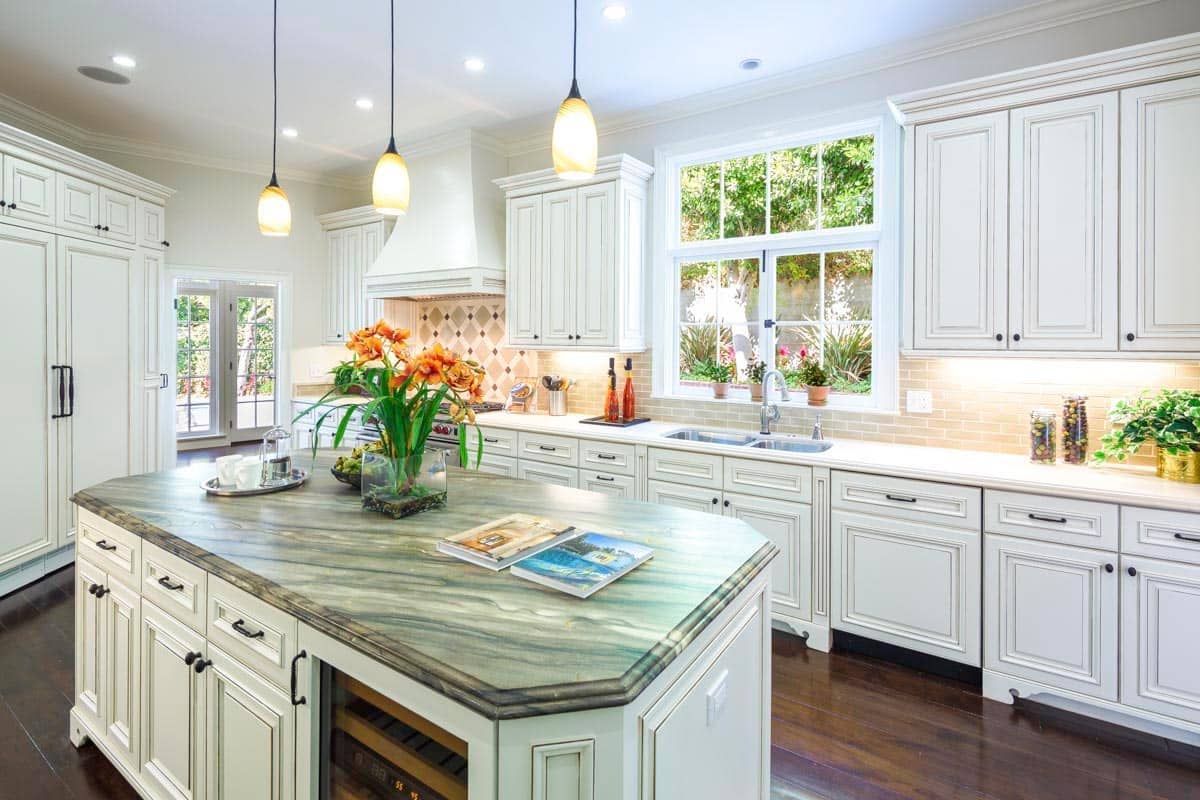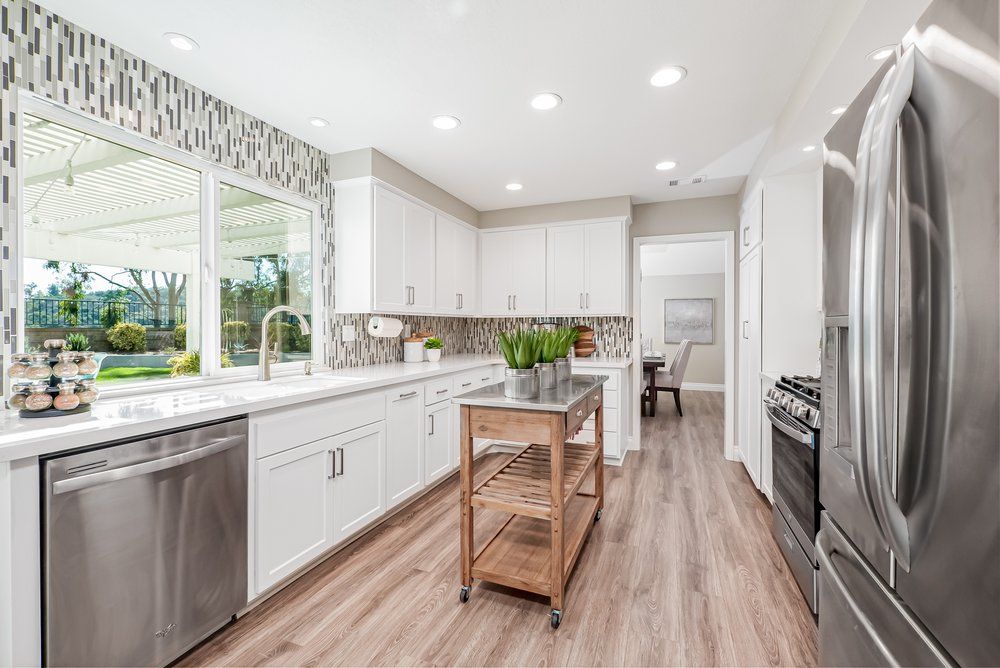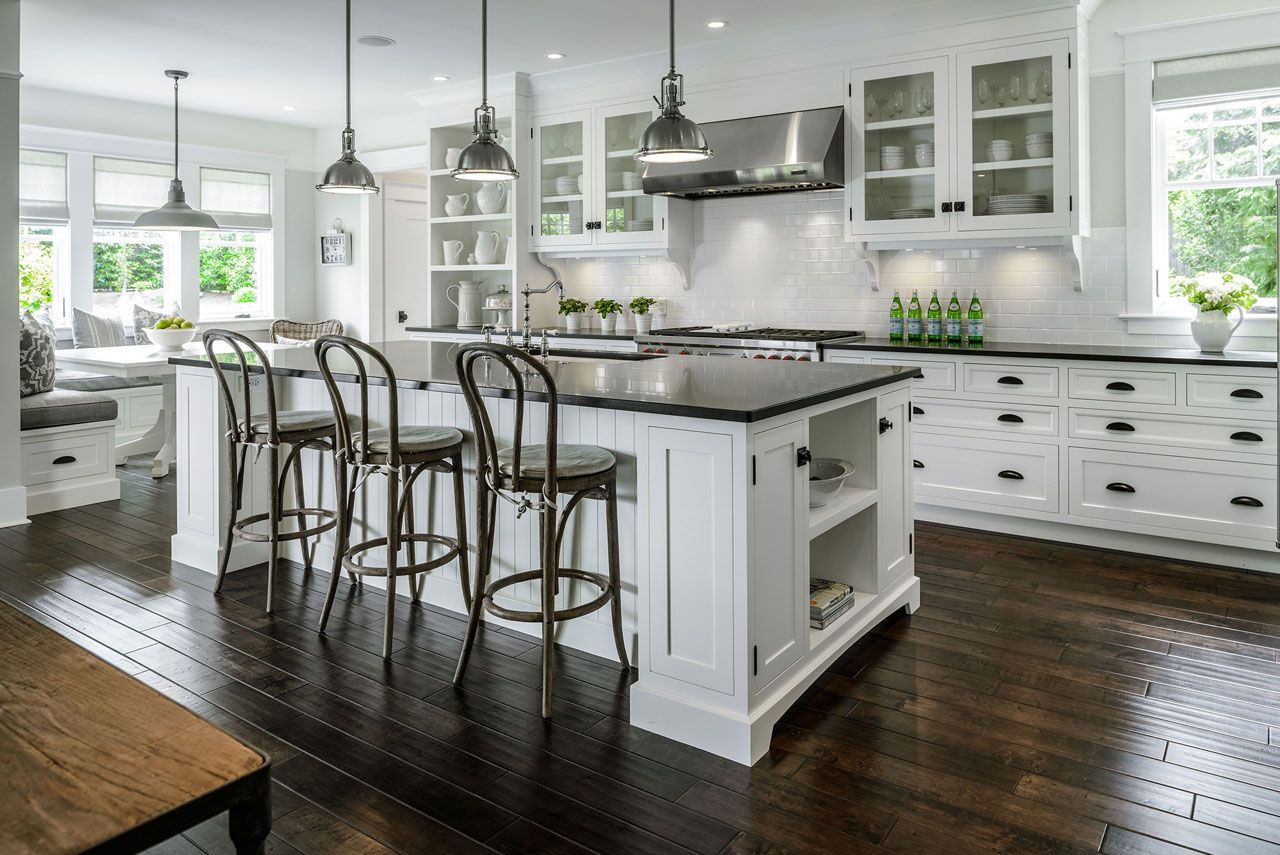TIPS, TRICKS & TRENDS
Want More Design Inspiration?

By Sabrina Phillips
•
September 30, 2025
The holiday season is just around the corner, and while it’s one of the most joyful times of the year, it can also feel overwhelming if you’re not prepared. From hosting gatherings to decorating your home and managing busy schedules, a little planning goes a long way. Here are some practical tips to help you prepare for the holidays with less stress and more cheer. 1. Start with a Plan The holidays often come with a long to-do list—shopping, cooking, decorating, and entertaining. Begin by writing everything down in one place. A simple checklist or calendar will help you stay organized and avoid last-minute scrambling. 2. Declutter Before Decorating Before pulling out the holiday décor, take some time to clear out clutter. Donate unused items, tidy up living spaces, and create a clean canvas for your seasonal touches. Not only does this make decorating easier, but it also gives your home a fresh, welcoming feel. 3. Prioritize Home Comfort Whether you’re hosting guests or simply enjoying quiet evenings, comfort is key during the holidays. Add cozy throws, update your lighting for a warm ambiance, and consider rearranging furniture to make gathering spaces more inviting. 4. Get Ahead on Shopping Avoid the holiday rush by starting your gift shopping early. Consider online orders, local boutiques, or even handmade gifts to make things more meaningful. Having presents wrapped and ready ahead of time frees you up to enjoy the festivities. 5. Plan Your Menu in Advance If you’ll be hosting dinners or parties, decide on your menu early. Stock up on pantry essentials, prep what you can ahead of time, and don’t hesitate to simplify—holiday meals don’t have to be complicated to be memorable. 6. Add Personal Touches From personalized gift tags to handwritten cards, small details make the holidays extra special. These thoughtful touches show care and create lasting memories for friends and family. 7. Remember to Enjoy the Season It’s easy to get caught up in the busyness of the holidays, but don’t forget to pause and enjoy it. Schedule downtime for yourself, watch a favorite holiday movie, or spend time on traditions that bring you joy. By planning ahead and focusing on what matters most, you can make this holiday season smoother, more meaningful, and filled with joy. Call or text us today to help you get your home holiday-ready! Designing Women of Orange County 949.371.9075

By Sabrina Phillips
•
September 30, 2025
The holidays always seem to sneak up on us—one minute it’s pumpkins and falling leaves, and the next you’re pulling out stockings and setting the table for family dinners. If you’ve been dreaming of refreshing your home before the holiday season, the time to start is now. Working with a designer early means you’ll be ready to welcome your loved ones into a beautiful, functional space without the stress of last-minute rushes. Why Work with a Designer? Remodeling isn’t just about new paint colors or replacing a countertop—it’s about creating a home that truly works for you. A designer can: Bring your vision to life. Whether it’s a dream kitchen for holiday meals or a cozy living room for gatherings, a designer translates your ideas into a well-planned reality. Save you time and stress. Designers manage the details—from layout to materials—so you don’t have to juggle everything on your own. Maximize your budget. With expert knowledge, a designer can help you avoid costly mistakes and find smart solutions that keep your project on track financially. Why Start Now? Avoid the holiday rush. As the season gets closer, contractors, installers, and suppliers book up quickly. Starting early ensures you’re at the front of the line. Allow time for shipping and installations. Furniture, fixtures, and finishes often require lead times. Beginning now gives you flexibility for deliveries without panic. Enjoy your space stress-free. Instead of living through renovations during the busiest time of the year, you’ll already be relaxing in your refreshed home by the holidays. Make hosting easier. A thoughtfully designed space makes entertaining seamless—whether it’s prepping a feast in your updated kitchen or having extra seating for guests. A Gift to Yourself and Your Home The holidays are all about gathering, celebrating, and creating memories. Imagine the joy of doing all of that in a newly remodeled space designed with your lifestyle in mind. By starting your project now with a professional designer, you’ll not only beat the holiday crowds—you’ll give yourself the gift of a home you love. Is your home holiday Ready? Let’s talk about how we can transform your home into your dream space! Designing Women of Orange County 949.371.9075

By Sabrina Phillips
•
August 31, 2025
The holiday season always seems to sneak up faster than we expect. Between planning meals, hosting gatherings, and creating a warm, welcoming space, the kitchen inevitably becomes the heart of it all. If you’ve been thinking about sprucing up, refreshing, or even remodeling your kitchen, starting early is one of the smartest moves you can make. Here are five reasons why: 1. Beat the Holiday Rush Contractors, designers, and suppliers get busier as the holidays approach. By starting early, you secure the help you need before everyone else is scrambling to update their homes. This means fewer delays, smoother scheduling, and more focused attention on your project. 2. Plenty of Time for Planning A kitchen remodel isn’t just about choosing countertops or cabinets—it’s about designing a space that truly works for your lifestyle. Starting early gives you the time to carefully plan, compare options, and make decisions without the pressure of a looming holiday deadline. 3. Avoid Supply Chain Stress With the increased demand during the fall and winter season, popular items like appliances, fixtures, or specialty finishes can be on backorder. Beginning now allows you to order what you need well in advance, so you don’t get caught waiting on deliveries when the big celebrations roll around. 4. Enjoy the Holidays Stress-Free Imagine walking into your newly refreshed kitchen, everything in place, ready for family gatherings, cookie baking, and festive dinners. By starting early, you can actually enjoy the holidays without the chaos of last-minute renovations—or worse, a kitchen still under construction. 5. Add Value and Warmth to Your Home Beyond the holidays, your updated kitchen continues to pay off. It’s an investment that adds beauty, function, and value to your home. You’ll love entertaining in it now, but you’ll also benefit from the upgrades long after the holiday season is over. Starting your kitchen project early ensures you’re ready for the season of joy, connection, and celebration. With the right planning and design, your kitchen can become the heart of your home—just in time for the holidays. Thinking about a remodel? Let’s talk about how we can make your kitchen your new favorite space! Designing Women of Orange County 949.371.9075

By Sabrina Phillips
•
August 31, 2025
The holidays are right around the corner—bringing with them cozy gatherings, festive meals, and quality time with loved ones. While the season is filled with joy, it can also shine a spotlight on areas of your home that feel cramped, outdated, or just not as functional as you’d like. That’s why now is the perfect time to start a home remodel and get your space holiday-ready. Create Space for Entertaining From Thanksgiving feasts to holiday parties, the heart of every celebration is often the home. A remodel allows you to open up your living areas, reimagine your kitchen, or add more seating options so guests feel comfortable and welcome. Even small changes—like updating your kitchen layout or improving flow between rooms—can make hosting stress-free. Upgrade Functionality Where It Matters The holidays bring a lot of extra activity: cooking big meals, overnight guests, and family traditions. A remodel can give you more storage, modern appliances, or a refreshed bathroom that makes everything run smoother. Functionality upgrades not only make your life easier during the holidays but also add long-term value to your home. Refresh the Look and Feel Your home sets the backdrop for holiday memories. A fresh coat of paint, updated flooring, or new lighting can instantly elevate your space, making it warm and inviting for the season. These updates also give you a home that you’ll continue to enjoy long after the holiday lights come down. Avoid the Holiday Rush Contractors and designers tend to book up quickly as the holidays approach. Starting now gives you the advantage of securing time with professionals and ensuring your project is completed in time to enjoy your remodeled home during the season’s celebrations. Invest in Memories, Not Just Materials At the end of the day, a remodel isn’t just about aesthetics—it’s about creating an environment where you can make lasting memories. From baking cookies with the kids to sharing laughter around the dinner table, your home should be a place that supports and enhances every holiday moment. Starting your remodel now means you’ll be ready to welcome family and friends into a home that’s not only beautiful but also functional, inviting, and truly holiday-ready. Thinking about a remodel? Let’s talk about how we can make your kitchen your new favorite space! Designing Women of Orange County 949.371.9075

By Sabrina Phillips
•
July 31, 2025
What if we told you that your daily routine could feel more like a retreat? That every time you stepped into your bathroom, you’d feel like you were walking into a serene spa rather than a cramped, outdated space? A bathroom remodel can do exactly that. With thoughtful design choices and the right details, you can turn even the most basic bathroom into a calming, spa-like oasis—and you don’t need a passport or plane ticket to enjoy it. The Power of a Spa-Inspired Bathroom Remodel A spa-like bathroom is about more than just aesthetics. It’s about how the space makes you feel. Soft lighting, calming colors, clean lines, and natural textures all play a part in creating a peaceful atmosphere. When done right, a bathroom remodel can shift your entire morning and evening routine from rushed to relaxing. Here’s how a remodel can bring that luxurious, vacation-vibe to your home: 1. Upgrade to a Luxurious Shower or Soaking Tub Swap your standard shower for a rainfall showerhead or install a deep soaking tub—suddenly, you’re not just washing up, you’re unwinding. Frameless glass showers, bench seating, steam features, and freestanding tubs all elevate the experience and make it feel more like a daily indulgence. 2. Add Spa-Like Details Small details make a big impact. Heated towel racks, soft-close drawers, ambient lighting, and built-in storage can turn an everyday bathroom into a place you look forward to. Even something as simple as installing dimmable lights or built-in speakers for calming music can make your space feel more intentional and peaceful. 3. Focus on Cleanliness and Clarity One of the hallmarks of a spa is its uncluttered, clean environment. A remodel gives you the opportunity to improve storage, hide cords, organize your products, and eliminate clutter. The result? A space that feels cleaner, clearer, and more relaxing every time you walk in. 4. Make It a Personal Retreat Design your remodeled bathroom with your lifestyle in mind. Whether that’s a vanity with perfect lighting for your skincare routine or a soaking tub for winding down after work, tailor the space to your own version of comfort. When your bathroom reflects what you need to recharge, it becomes more than just functional—it becomes a destination. Bring the Spa Home You don’t need a weekend getaway to feel refreshed. A bathroom remodel can bring the peace and luxury of a spa retreat into your daily life. Imagine stepping into your bathroom and instantly feeling calm, refreshed, and ready to take on the day—or unwind from it. That’s the power of a thoughtfully remodeled space. Ready to create your own personal spa? Let’s talk about what’s possible for your bathroom. Your daily escape could be just a remodel away. Designing Women of Orange County 949.371.9075

By Sabrina Phillips
•
September 30, 2025
The holiday season is just around the corner, and while it’s one of the most joyful times of the year, it can also feel overwhelming if you’re not prepared. From hosting gatherings to decorating your home and managing busy schedules, a little planning goes a long way. Here are some practical tips to help you prepare for the holidays with less stress and more cheer. 1. Start with a Plan The holidays often come with a long to-do list—shopping, cooking, decorating, and entertaining. Begin by writing everything down in one place. A simple checklist or calendar will help you stay organized and avoid last-minute scrambling. 2. Declutter Before Decorating Before pulling out the holiday décor, take some time to clear out clutter. Donate unused items, tidy up living spaces, and create a clean canvas for your seasonal touches. Not only does this make decorating easier, but it also gives your home a fresh, welcoming feel. 3. Prioritize Home Comfort Whether you’re hosting guests or simply enjoying quiet evenings, comfort is key during the holidays. Add cozy throws, update your lighting for a warm ambiance, and consider rearranging furniture to make gathering spaces more inviting. 4. Get Ahead on Shopping Avoid the holiday rush by starting your gift shopping early. Consider online orders, local boutiques, or even handmade gifts to make things more meaningful. Having presents wrapped and ready ahead of time frees you up to enjoy the festivities. 5. Plan Your Menu in Advance If you’ll be hosting dinners or parties, decide on your menu early. Stock up on pantry essentials, prep what you can ahead of time, and don’t hesitate to simplify—holiday meals don’t have to be complicated to be memorable. 6. Add Personal Touches From personalized gift tags to handwritten cards, small details make the holidays extra special. These thoughtful touches show care and create lasting memories for friends and family. 7. Remember to Enjoy the Season It’s easy to get caught up in the busyness of the holidays, but don’t forget to pause and enjoy it. Schedule downtime for yourself, watch a favorite holiday movie, or spend time on traditions that bring you joy. By planning ahead and focusing on what matters most, you can make this holiday season smoother, more meaningful, and filled with joy. Call or text us today to help you get your home holiday-ready! Designing Women of Orange County 949.371.9075

By Sabrina Phillips
•
September 30, 2025
The holidays always seem to sneak up on us—one minute it’s pumpkins and falling leaves, and the next you’re pulling out stockings and setting the table for family dinners. If you’ve been dreaming of refreshing your home before the holiday season, the time to start is now. Working with a designer early means you’ll be ready to welcome your loved ones into a beautiful, functional space without the stress of last-minute rushes. Why Work with a Designer? Remodeling isn’t just about new paint colors or replacing a countertop—it’s about creating a home that truly works for you. A designer can: Bring your vision to life. Whether it’s a dream kitchen for holiday meals or a cozy living room for gatherings, a designer translates your ideas into a well-planned reality. Save you time and stress. Designers manage the details—from layout to materials—so you don’t have to juggle everything on your own. Maximize your budget. With expert knowledge, a designer can help you avoid costly mistakes and find smart solutions that keep your project on track financially. Why Start Now? Avoid the holiday rush. As the season gets closer, contractors, installers, and suppliers book up quickly. Starting early ensures you’re at the front of the line. Allow time for shipping and installations. Furniture, fixtures, and finishes often require lead times. Beginning now gives you flexibility for deliveries without panic. Enjoy your space stress-free. Instead of living through renovations during the busiest time of the year, you’ll already be relaxing in your refreshed home by the holidays. Make hosting easier. A thoughtfully designed space makes entertaining seamless—whether it’s prepping a feast in your updated kitchen or having extra seating for guests. A Gift to Yourself and Your Home The holidays are all about gathering, celebrating, and creating memories. Imagine the joy of doing all of that in a newly remodeled space designed with your lifestyle in mind. By starting your project now with a professional designer, you’ll not only beat the holiday crowds—you’ll give yourself the gift of a home you love. Is your home holiday Ready? Let’s talk about how we can transform your home into your dream space! Designing Women of Orange County 949.371.9075

By Sabrina Phillips
•
August 31, 2025
The holiday season always seems to sneak up faster than we expect. Between planning meals, hosting gatherings, and creating a warm, welcoming space, the kitchen inevitably becomes the heart of it all. If you’ve been thinking about sprucing up, refreshing, or even remodeling your kitchen, starting early is one of the smartest moves you can make. Here are five reasons why: 1. Beat the Holiday Rush Contractors, designers, and suppliers get busier as the holidays approach. By starting early, you secure the help you need before everyone else is scrambling to update their homes. This means fewer delays, smoother scheduling, and more focused attention on your project. 2. Plenty of Time for Planning A kitchen remodel isn’t just about choosing countertops or cabinets—it’s about designing a space that truly works for your lifestyle. Starting early gives you the time to carefully plan, compare options, and make decisions without the pressure of a looming holiday deadline. 3. Avoid Supply Chain Stress With the increased demand during the fall and winter season, popular items like appliances, fixtures, or specialty finishes can be on backorder. Beginning now allows you to order what you need well in advance, so you don’t get caught waiting on deliveries when the big celebrations roll around. 4. Enjoy the Holidays Stress-Free Imagine walking into your newly refreshed kitchen, everything in place, ready for family gatherings, cookie baking, and festive dinners. By starting early, you can actually enjoy the holidays without the chaos of last-minute renovations—or worse, a kitchen still under construction. 5. Add Value and Warmth to Your Home Beyond the holidays, your updated kitchen continues to pay off. It’s an investment that adds beauty, function, and value to your home. You’ll love entertaining in it now, but you’ll also benefit from the upgrades long after the holiday season is over. Starting your kitchen project early ensures you’re ready for the season of joy, connection, and celebration. With the right planning and design, your kitchen can become the heart of your home—just in time for the holidays. Thinking about a remodel? Let’s talk about how we can make your kitchen your new favorite space! Designing Women of Orange County 949.371.9075

By Sabrina Phillips
•
August 31, 2025
The holidays are right around the corner—bringing with them cozy gatherings, festive meals, and quality time with loved ones. While the season is filled with joy, it can also shine a spotlight on areas of your home that feel cramped, outdated, or just not as functional as you’d like. That’s why now is the perfect time to start a home remodel and get your space holiday-ready. Create Space for Entertaining From Thanksgiving feasts to holiday parties, the heart of every celebration is often the home. A remodel allows you to open up your living areas, reimagine your kitchen, or add more seating options so guests feel comfortable and welcome. Even small changes—like updating your kitchen layout or improving flow between rooms—can make hosting stress-free. Upgrade Functionality Where It Matters The holidays bring a lot of extra activity: cooking big meals, overnight guests, and family traditions. A remodel can give you more storage, modern appliances, or a refreshed bathroom that makes everything run smoother. Functionality upgrades not only make your life easier during the holidays but also add long-term value to your home. Refresh the Look and Feel Your home sets the backdrop for holiday memories. A fresh coat of paint, updated flooring, or new lighting can instantly elevate your space, making it warm and inviting for the season. These updates also give you a home that you’ll continue to enjoy long after the holiday lights come down. Avoid the Holiday Rush Contractors and designers tend to book up quickly as the holidays approach. Starting now gives you the advantage of securing time with professionals and ensuring your project is completed in time to enjoy your remodeled home during the season’s celebrations. Invest in Memories, Not Just Materials At the end of the day, a remodel isn’t just about aesthetics—it’s about creating an environment where you can make lasting memories. From baking cookies with the kids to sharing laughter around the dinner table, your home should be a place that supports and enhances every holiday moment. Starting your remodel now means you’ll be ready to welcome family and friends into a home that’s not only beautiful but also functional, inviting, and truly holiday-ready. Thinking about a remodel? Let’s talk about how we can make your kitchen your new favorite space! Designing Women of Orange County 949.371.9075

By Sabrina Phillips
•
July 31, 2025
What if we told you that your daily routine could feel more like a retreat? That every time you stepped into your bathroom, you’d feel like you were walking into a serene spa rather than a cramped, outdated space? A bathroom remodel can do exactly that. With thoughtful design choices and the right details, you can turn even the most basic bathroom into a calming, spa-like oasis—and you don’t need a passport or plane ticket to enjoy it. The Power of a Spa-Inspired Bathroom Remodel A spa-like bathroom is about more than just aesthetics. It’s about how the space makes you feel. Soft lighting, calming colors, clean lines, and natural textures all play a part in creating a peaceful atmosphere. When done right, a bathroom remodel can shift your entire morning and evening routine from rushed to relaxing. Here’s how a remodel can bring that luxurious, vacation-vibe to your home: 1. Upgrade to a Luxurious Shower or Soaking Tub Swap your standard shower for a rainfall showerhead or install a deep soaking tub—suddenly, you’re not just washing up, you’re unwinding. Frameless glass showers, bench seating, steam features, and freestanding tubs all elevate the experience and make it feel more like a daily indulgence. 2. Add Spa-Like Details Small details make a big impact. Heated towel racks, soft-close drawers, ambient lighting, and built-in storage can turn an everyday bathroom into a place you look forward to. Even something as simple as installing dimmable lights or built-in speakers for calming music can make your space feel more intentional and peaceful. 3. Focus on Cleanliness and Clarity One of the hallmarks of a spa is its uncluttered, clean environment. A remodel gives you the opportunity to improve storage, hide cords, organize your products, and eliminate clutter. The result? A space that feels cleaner, clearer, and more relaxing every time you walk in. 4. Make It a Personal Retreat Design your remodeled bathroom with your lifestyle in mind. Whether that’s a vanity with perfect lighting for your skincare routine or a soaking tub for winding down after work, tailor the space to your own version of comfort. When your bathroom reflects what you need to recharge, it becomes more than just functional—it becomes a destination. Bring the Spa Home You don’t need a weekend getaway to feel refreshed. A bathroom remodel can bring the peace and luxury of a spa retreat into your daily life. Imagine stepping into your bathroom and instantly feeling calm, refreshed, and ready to take on the day—or unwind from it. That’s the power of a thoughtfully remodeled space. Ready to create your own personal spa? Let’s talk about what’s possible for your bathroom. Your daily escape could be just a remodel away. Designing Women of Orange County 949.371.9075
Our Helpful Videos











